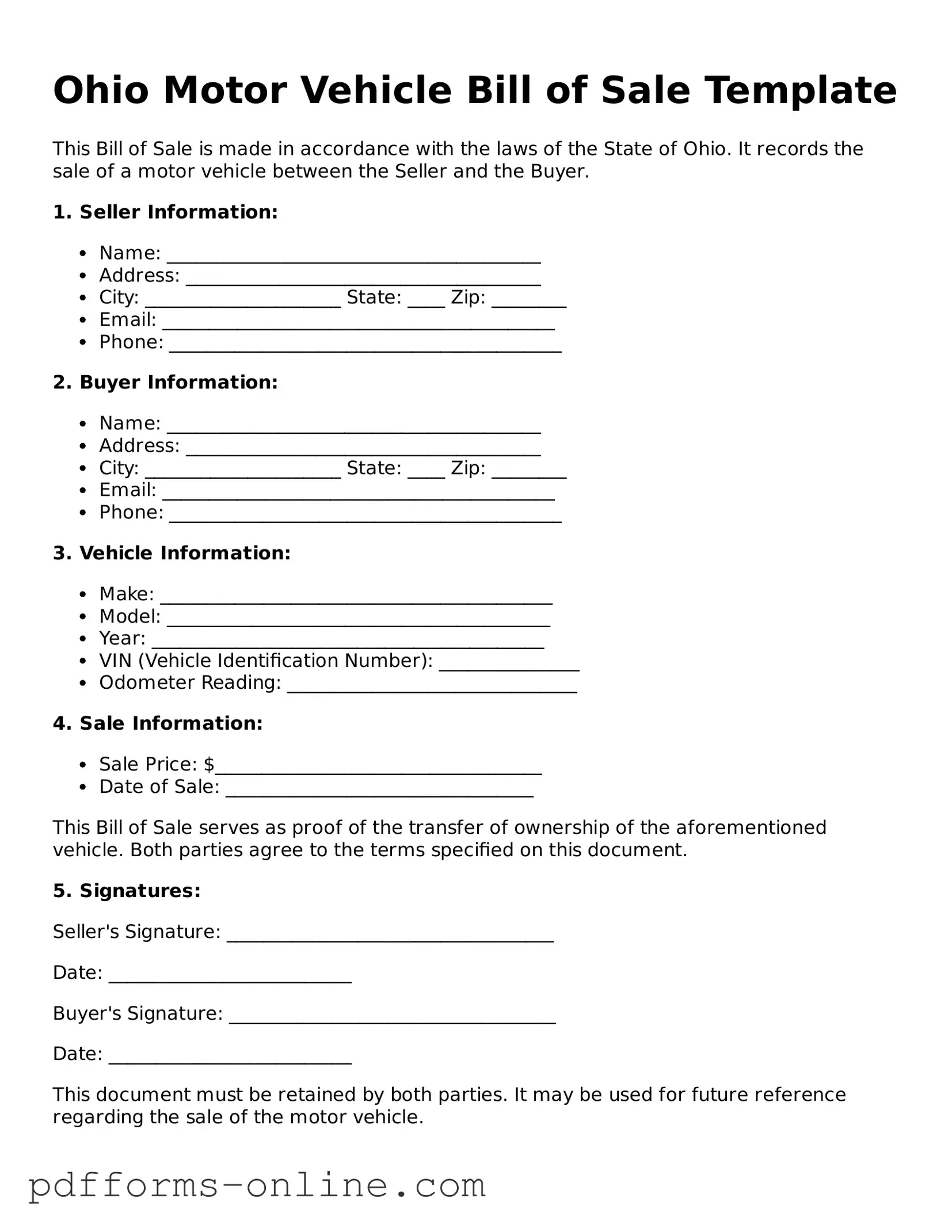The Ohio Motor Vehicle Bill of Sale form shares similarities with the general Bill of Sale. A general Bill of Sale serves as a legal document that records the transfer of ownership of personal property from one party to another. Both documents include essential details such as the names of the buyer and seller, a description of the item being sold, and the sale price. This ensures that both parties have a clear understanding of the transaction and provides proof of ownership transfer.
Another document that resembles the Ohio Motor Vehicle Bill of Sale is the Vehicle Title. The Vehicle Title is an official document issued by the state that proves ownership of a vehicle. While the Bill of Sale is a receipt for the transaction, the title is a legal document that must be transferred to the new owner. Both documents are crucial in the process of buying or selling a vehicle, ensuring that ownership is accurately recorded and recognized by the state.
The Purchase Agreement is also similar to the Ohio Motor Vehicle Bill of Sale. This document outlines the terms and conditions of the sale, including payment details, delivery terms, and any warranties or guarantees. Like the Bill of Sale, the Purchase Agreement serves as a record of the transaction and can help resolve disputes by providing a clear outline of what was agreed upon by both parties.
A Lease Agreement can be compared to the Ohio Motor Vehicle Bill of Sale in terms of documenting the transfer of rights. While a Bill of Sale indicates a full transfer of ownership, a Lease Agreement allows one party to use an asset owned by another party for a specified period. Both documents require signatures from both parties, ensuring that everyone involved understands the terms of the transaction.
The Odometer Disclosure Statement is another document that is closely related to the Ohio Motor Vehicle Bill of Sale. This form is often required during the sale of a vehicle to verify the mileage at the time of sale. Both documents work together to provide transparency in the transaction and help prevent fraud by ensuring that the buyer is aware of the vehicle's condition and history.
The Affidavit of Ownership is similar as well, particularly in situations where a vehicle's title is lost. This document allows the seller to declare ownership and transfer rights to the buyer, even without the original title. Like the Bill of Sale, it serves as a legal affirmation of ownership and helps facilitate the sale process, especially when documentation is incomplete.
The Release of Liability form is another important document that complements the Ohio Motor Vehicle Bill of Sale. This form notifies the state that the seller is no longer responsible for the vehicle after the sale. Both documents protect the interests of the seller and buyer by providing proof of the transaction and ensuring that liability for the vehicle is properly transferred.
Lastly, the Conditional Sales Agreement can be compared to the Ohio Motor Vehicle Bill of Sale, particularly when financing is involved. This document outlines the terms under which a buyer can purchase a vehicle while making installment payments. It includes details about the payment schedule and ownership rights, similar to how a Bill of Sale confirms the sale and terms of ownership transfer.
